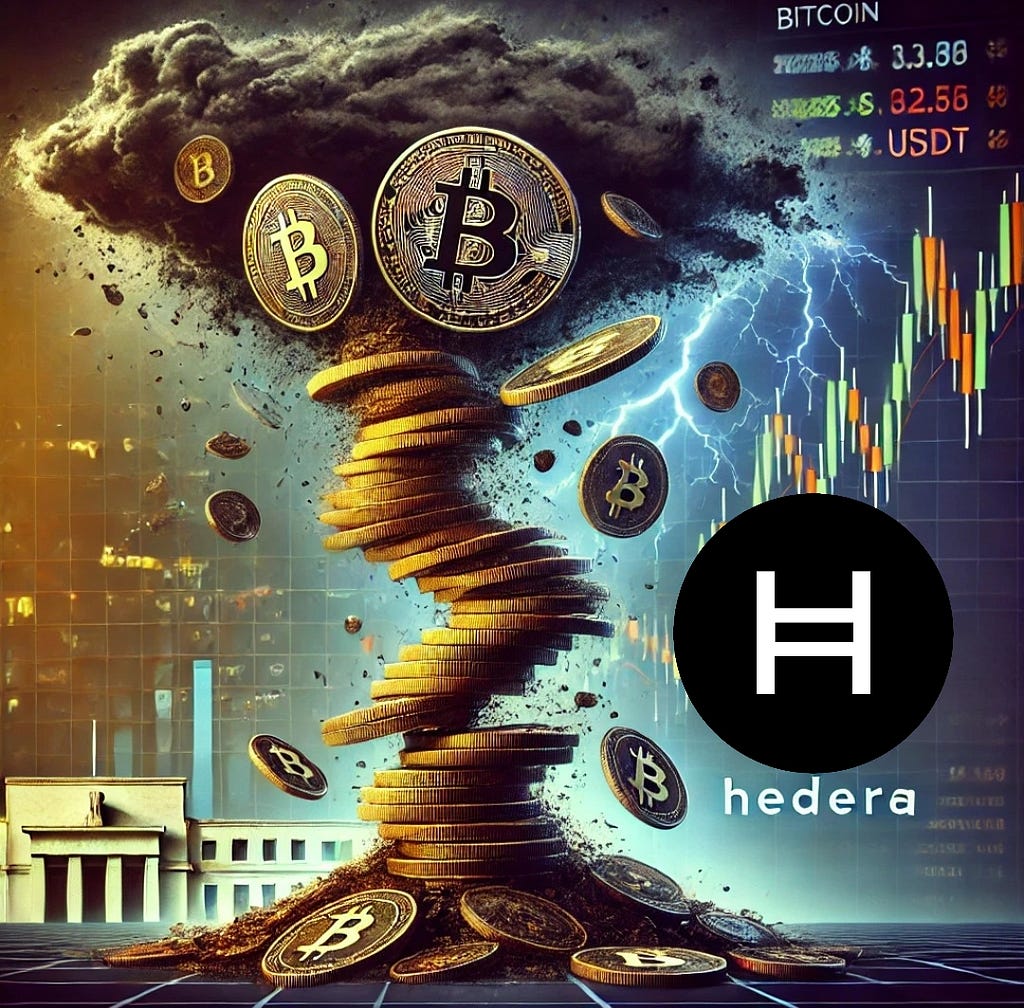Bitcoin Isn’t Priced in Dollars: It’s Weighed Against USDT, and That’s a Problem
Bitcoin has long been touted as the currency of the future—a decentralized, trustless system free from the influence of governments and banks. However, what many fail to realize is that Bitcoin’s value isn’t measured in dollars as most people assume. Instead, it is primarily priced in USDT (Tether), a controversial stablecoin that has quietly become the backbone of the cryptocurrency ecosystem. The implications of this reliance on Tether reveal a troubling and unsustainable structure, raising questions about the long-term stability of both Bitcoin and the broader crypto market.
The USDT-Bitcoin Relationship
Tether is a stablecoin pegged to the US dollar, but unlike traditional fiat money, it is not backed by a centralized government or insured bank reserves. Instead, Tether claims to maintain its peg by holding reserves, including cash equivalents, commercial paper, and, notably, Bitcoin itself. This means that the value of USDT is partially tied to the very cryptocurrency it facilitates trading for—a circular relationship that critics argue resembles a Ponzi scheme.
Unlike real dollars in a bank account, which are protected by financial regulations and often insured, USDT lacks such guarantees. If a USDT wallet is compromised or hacked, there’s no recourse for users, whereas traditional banks and financial institutions offer mechanisms for reversing fraudulent transactions or reimbursing customers.
On platforms like Cash App or Binance, Bitcoin is often bought and sold using USDT rather than USD. The illusion of a “dollar-based” system persists because USDT closely mimics the dollar’s value. However, this subtle distinction is critical: Bitcoin isn’t being measured in dollars but in a proxy that is itself dependent on Bitcoin’s continued success. This feedback loop creates a precarious situation where Bitcoin and Tether prop each other up—until they can’t.
Why Bitcoin Keeps Rising, But Retailers Won’t Accept It
Bitcoin’s ever-climbing price is a result of speculative trading, much of which is fueled by USDT. Tether’s issuance has exploded over the years, injecting billions of new USDT into the market. This increase in supply creates liquidity for Bitcoin trading, driving up demand and, in turn, its price. However, this speculative growth has little connection to Bitcoin’s utility as a payment system.
Retailers remain hesitant to accept Bitcoin for two key reasons:
1. Volatility: Despite its rising value, Bitcoin remains highly volatile. Businesses can’t afford the risk of accepting payment in a currency that might lose 10% or more of its value in a single day.
2. Transaction Costs: Bitcoin’s network fees make it impractical for everyday transactions. With fees averaging $30 or more during periods of high activity, it’s far cheaper to use traditional payment systems or even other cryptocurrencies with lower transaction costs.
This disconnect between Bitcoin’s speculative value and its practical utility underscores why it hasn’t achieved widespread adoption as a payment method.
The Ponzi-Like Nature of Tether
Tether’s role in Bitcoin’s rise is deeply concerning. Court cases, fines, and public admissions have revealed that Tether’s reserves are not fully backed by fiat currencies. Instead, a significant portion of its reserves includes Bitcoin and other assets. This creates a self-referential system where Tether backs itself with Bitcoin, which, in turn, derives much of its liquidity from Tether. The arrangement is eerily reminiscent of a Ponzi scheme: as long as new money flows in, the system appears stable, but any significant outflow could trigger a collapse.
If confidence in Tether wavers and USDT loses its peg to the dollar, the ripple effects could be catastrophic. As USDT holders rush to cash out, Tether would be forced to liquidate its Bitcoin reserves to meet redemptions. With over 80,000 BTC in its reserves, such a sell-off would flood the market, causing Bitcoin’s price to plummet. Billions of dollars in market value could evaporate overnight.
The Role of CBDCs and Hedera
In the event of a Tether collapse, a replacement stablecoin would need to emerge. Many experts believe this will take the form of central bank digital currencies (CBDCs), which are already in development worldwide. These government-backed digital currencies would provide the stability and regulation that Tether lacks, effectively sidelining USDT as the dominant stablecoin.
One likely beneficiary of this transition is Hedera Hashgraph (HBAR). Hedera’s close relationships with the U.S. government, the White House, and major corporations on its governing council position it as a frontrunner in the next phase of digital currency adoption. Hedera’s enterprise-grade technology and partnerships with companies like Google, IBM, and Boeing make it an ideal platform for hosting a U.S. CBDC.
The introduction of a Fed-backed digital currency on Hedera’s network could mark a major shift in the crypto landscape, with Bitcoin potentially taking a backseat as the focus shifts to regulated, government-endorsed systems.
What Comes Next?
The reliance on Tether as the backbone of the crypto market is unsustainable. As regulatory scrutiny intensifies and alternatives like CBDCs gain traction, Tether’s dominance will likely wane. Bitcoin will survive, but its price could return to much lower levels as the speculative bubble deflates. Meanwhile, platforms like Hedera will rise to prominence, providing the infrastructure for a new era of digital finance.
The lesson here is clear: Bitcoin’s value isn’t as straightforward as it seems. Its price is not measured in dollars but in USDT, a stablecoin whose stability is far from guaranteed. Understanding this distinction is critical for anyone navigating the crypto space, as the future may look very different from the hype-driven market of today.
Bitcoin Isn’t Priced in Dollars: It’s Weighed Against USDT, and That’s a Problem was originally published in The Capital on Medium, where people are continuing the conversation by highlighting and responding to this story.
